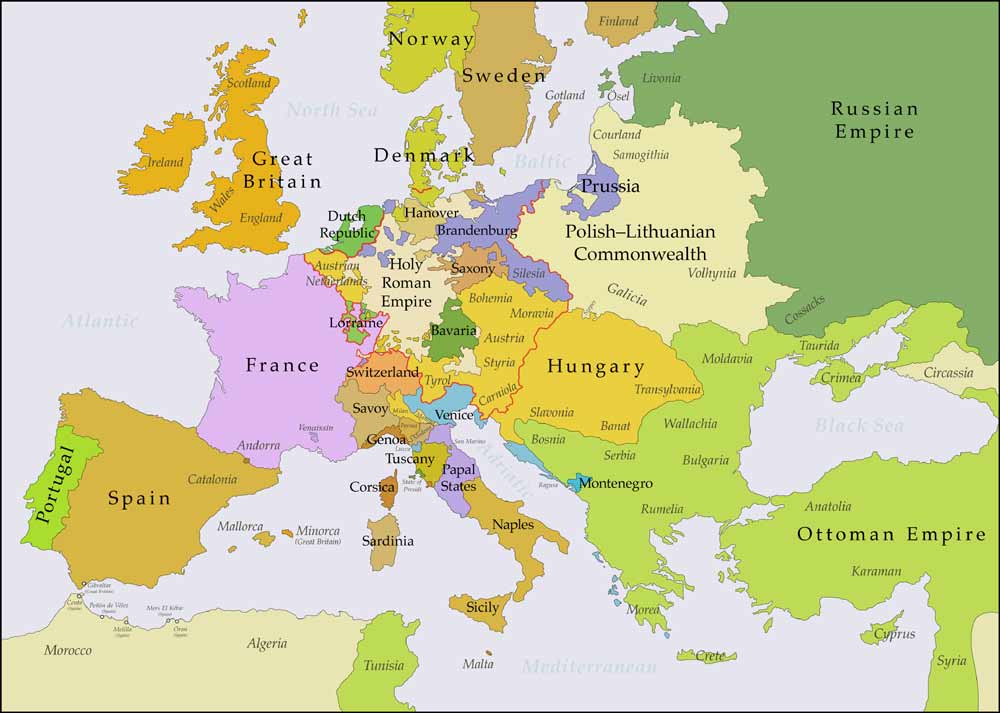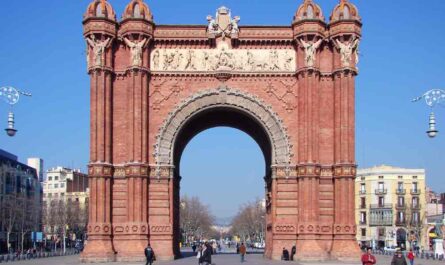Europe transcends its mere geographical boundaries; it is a living testament to the interplay of natural features, political intricacies, and the rich tapestry of human history. From the Arctic tundra to the Mediterranean coast, from the bustling metropolises to quaint villages, Europe unfolds as a continent that defies easy categorization—a dynamic mosaic where the past and present coalesce in a perpetual dance of cultural, political, and geographical nuances.
European Geography and Boundaries
Europe, an expansive continent nestled exclusively within the Northern Hemisphere and predominantly in the Eastern Hemisphere, boasts a geographical expanse extending from the Arctic Ocean to the north, the Atlantic Ocean to the west, the Mediterranean Sea to the south, and the Asian border to the east. It is marked by the western peninsulas of the Eurasian landmass, offering a breathtaking tapestry of diverse landscapes and climates.
The boundary demarcation between Europe and Asia is a complex interplay of natural features, including the Ural Mountains, the Ural River, the Caspian Sea, the Greater Caucasus, the Black Sea, and the intricate waterways of the Turkish Straits. While some of these delineations occur over land, the designation of Europe as a distinct continent is not solely grounded in geography; rather, it encompasses a rich tapestry of historical narratives and cultural legacies.
Continental Dimensions and Political Landscape
Encompassing a staggering 10,180,000 square kilometers (3,930,000 square miles), Europe constitutes a mere 2% of the Earth’s surface, underscoring its status as the second smallest continent within the conventional seven-continent model. Politically, this diverse expanse is fragmented into approximately fifty sovereign states. Notably, Russia emerges as the largest and most populous among these, spanning a colossal 39% of the continent and housing 15% of its inhabitants.
Europe’s political landscape is a mosaic of nation-states, each contributing a unique flavor to the continent’s cultural diversity. The intricate interplay of geopolitical boundaries and historical affiliations has shaped a tapestry where each sovereign state emerges as a distinct brushstroke in the vibrant canvas of European identity.
Capitals of European Sovereign States
Within the rich fabric of European diversity, the continent showcases a remarkable array of capital cities, each pulsating with its own historical significance and contemporary vibrancy. From the grandeur of Moscow in Russia to the cultural allure of Paris in France, these capitals serve as both political epicenters and cultural melting pots.
Embarking on a virtual journey through Europe’s capitals unveils a captivating narrative of architecture, history, and contemporary life. Whether wandering through the historic streets of Rome or experiencing the modernity of Berlin, each capital city is a testament to the resilience and evolution of European societies over the ages.
Capital cities in Europe
Capital cities in Europe (According to Alphabetic order)
| Country | Capital City | Population |
|---|---|---|
| Albania | Tirana | 418,495 |
| Andorra | Andorra la Vella | 22,205 |
| Austria | Vienna | 1,897,491 |
| Belarus | Minsk | 1,982,444 |
| Belgium | Brussels | 1,175,173 |
| Bosnia and Herzegovina | Sarajevo | 275,524 |
| Bulgaria | Sofia | 1,241,675 |
| Croatia | Zagreb | 792,875 |
| Czechia | Prague | 1,301,132 |
| Denmark | Copenhagen | 616,098 |
| Estonia | Tallinn | 430,805 |
| Faroe Islands | Tórshavn | 13,408 |
| Finland | Helsinki | 639,227 |
| France | Paris | 2,206,488 |
| Germany | Berlin | 3,644,826 |
| Gibraltar | Gibraltar | 34,003 |
| Greece | Athens | 664,046 |
| Guernsey | Saint Peter Port | 18,958 |
| Hungary | Budapest | 1,751,219 |
| Iceland | Reykjavík | 124,644 |
| Ireland | Dublin | 553,165 |
| Isle of Man | Douglas | 27,938 |
| Italy | Rome | 2,873,147 |
| Jersey | Saint Helier | 33,500 |
| Kosovo | Pristina | 211,129 |
| Latvia | Riga | 632,614 |
| Liechtenstein | Vaduz | 5,668 |
| Lithuania | Vilnius | 546,382 |
| Luxembourg | Luxembourg | 119,215 |
| Malta | Valletta | 5,735 |
| Moldova | Chisinau | 339,079 |
| Monaco | Monaco | 37,308 |
| Montenegro | Podgorica | 187,085 |
| Netherlands | Amsterdam | 864,217 |
| North Macedonia | Skopje | 546,824 |
| Norway | Oslo | 681,067 |
| Poland | Warsaw | 1,764,615 |
| Portugal | Lisbon | 505,526 |
| Romania | Bucharest | 1,829,897 |
| Russia | Moscow | 13,197,596 |
| San Marino | San Marino | 4,127 |
| Serbia | Belgrade | 1,378,682 |
| Slovakia | Bratislava | 427,744 |
| Slovenia | Ljubljana | 279,650 |
| Spain | Madrid | 3,182,981 |
| Svalbard | Longyearbyen | 2,144 |
| Sweden | Stockholm | 935,619 |
| Switzerland | Bern | 133,883 |
| Ukraine | Kiev | 2,893,215 |
| United Kingdom | London | 8,673,713 |
| Åland Islands | Mariehamn | 11,709 |
Capital cities in Europe
Capital cities in Europe (According to Population)
| Country | Capital City | Population |
|---|---|---|
| Russia | Moscow | 13,197,596 |
| United Kingdom | London | 8,673,713 |
| Germany | Berlin | 3,644,826 |
| Spain | Madrid | 3,182,981 |
| Ukraine | Kiev | 2,893,215 |
| Italy | Rome | 2,873,147 |
| France | Paris | 2,206,488 |
| Belarus | Minsk | 1,982,444 |
| Austria | Vienna | 1,897,491 |
| Romania | Bucharest | 1,829,897 |
| Poland | Warsaw | 1,764,615 |
| Hungary | Budapest | 1,751,219 |
| Serbia | Belgrade | 1,378,682 |
| Czechia | Prague | 1,301,132 |
| Bulgaria | Sofia | 1,241,675 |
| Belgium | Brussels | 1,175,173 |
| Sweden | Stockholm | 935,619 |
| Netherlands | Amsterdam | 864,217 |
| Croatia | Zagreb | 792,875 |
| Norway | Oslo | 681,067 |
| Greece | Athens | 664,046 |
| Finland | Helsinki | 639,227 |
| Latvia | Riga | 632,614 |
| Denmark | Copenhagen | 616,098 |
| Ireland | Dublin | 553,165 |
| North Macedonia | Skopje | 546,824 |
| Lithuania | Vilnius | 546,382 |
| Portugal | Lisbon | 505,526 |
| Estonia | Tallinn | 430,805 |
| Slovakia | Bratislava | 427,744 |
| Albania | Tirana | 418,495 |
| Moldova | Chisinau | 339,079 |
| Slovenia | Ljubljana | 279,650 |
| Bosnia and Herzegovina | Sarajevo | 275,524 |
| Kosovo | Pristina | 211,129 |
| Montenegro | Podgorica | 187,085 |
| Switzerland | Bern | 133,883 |
| Iceland | Reykjavík | 124,644 |
| Luxembourg | Luxembourg | 119,215 |
| Monaco | Monaco | 37,308 |
| Gibraltar | Gibraltar | 34,003 |
| Jersey | Saint Helier | 33,500 |
| Isle of Man | Douglas | 27,938 |
| Andorra | Andorra la Vella | 22,205 |
| Guernsey | Saint Peter Port | 18,958 |
| Faroe Islands | Tórshavn | 13,408 |
| Åland Islands | Mariehamn | 11,709 |
| Malta | Valletta | 5,735 |
| Liechtenstein | Vaduz | 5,668 |
| San Marino | San Marino | 4,127 |
| Svalbard | Longyearbyen | 2,144 |
Capital cities in Europe
Capital cities in Europe (According to Capital alphabetic order)
| Country | Capital City | Population |
|---|---|---|
| Netherlands | Amsterdam | 864,217 |
| Andorra | Andorra la Vella | 22,205 |
| Greece | Athens | 664,046 |
| Serbia | Belgrade | 1,378,682 |
| Germany | Berlin | 3,644,826 |
| Switzerland | Bern | 133,883 |
| Slovakia | Bratislava | 427,744 |
| Belgium | Brussels | 1,175,173 |
| Romania | Bucharest | 1,829,897 |
| Hungary | Budapest | 1,751,219 |
| Moldova | Chisinau | 339,079 |
| Denmark | Copenhagen | 616,098 |
| Isle of Man | Douglas | 27,938 |
| Ireland | Dublin | 553,165 |
| Gibraltar | Gibraltar | 34,003 |
| Finland | Helsinki | 639,227 |
| Ukraine | Kiev | 2,893,215 |
| Portugal | Lisbon | 505,526 |
| Slovenia | Ljubljana | 279,650 |
| United Kingdom | London | 8,673,713 |
| Svalbard | Longyearbyen | 2,144 |
| Luxembourg | Luxembourg | 119,215 |
| Spain | Madrid | 3,182,981 |
| Åland Islands | Mariehamn | 11,709 |
| Belarus | Minsk | 1,982,444 |
| Monaco | Monaco | 37,308 |
| Russia | Moscow | 13,197,596 |
| Norway | Oslo | 681,067 |
| France | Paris | 2,206,488 |
| Montenegro | Podgorica | 187,085 |
| Czechia | Prague | 1,301,132 |
| Kosovo | Pristina | 211,129 |
| Iceland | Reykjavík | 124,644 |
| Latvia | Riga | 632,614 |
| Italy | Rome | 2,873,147 |
| Jersey | Saint Helier | 33,500 |
| Guernsey | Saint Peter Port | 18,958 |
| San Marino | San Marino | 4,127 |
| Bosnia and Herzegovina | Sarajevo | 275,524 |
| North Macedonia | Skopje | 546,824 |
| Bulgaria | Sofia | 1,241,675 |
| Sweden | Stockholm | 935,619 |
| Estonia | Tallinn | 430,805 |
| Albania | Tirana | 418,495 |
| Faroe Islands | Tórshavn | 13,408 |
| Liechtenstein | Vaduz | 5,668 |
| Malta | Valletta | 5,735 |
| Austria | Vienna | 1,897,491 |
| Lithuania | Vilnius | 546,382 |
| Poland | Warsaw | 1,764,615 |
| Croatia | Zagreb | 792,875 |
We hope this table on capital cities in Europe was worth reading.
Other recommended Reading
- Cultural Wonders of the World – A Complete List
- 22 Pashupatinath Temple Nepal Interesting Fun Facts
- List of 54 Greatest Empires in Entire History Timeline
- 100 United Nations Facts – The UN Basic Facts for All
- 100 Plateau of Tibet Facts to Astonish You
- 200 Kazakhstan Fun Facts Everyone Should Know
- 125 Interesting Facts about Hungary You Must Enjoy
- 200 Interesting Facts about Poland for Travelers
- 200 Cool Facts about Germany to Surprise You
- 100 Interesting Facts about Sudan – Struggle and Hope
- 100 Interesting Facts About The Philippines
- 50 Fun Facts about Cameroon for Inquisitive Learners
More Interesting Articles
- 50 Interesting Vanuatu Facts – A Least Visited Country
- 50 Interesting Facts About Colombo, Sri Lanka
- 50 Interesting and Awesome Facts about Rwanda
- 25 Interesting Facts about Phuket, Thailand
- 50 Haiti Fun Facts for Inquisitive Travelers
- 100 Interesting Facts About Indonesia for GK
- 50 Interesting Namibia Facts to Know About
- 200 Interesting Facts to Know about Italy
- 30 North Sentinel Island Facts That You May Not Know
- 40 Jeju Island South Korea Facts to Know
- List of 150+ Largest Empires in History Once Ruled the World
- World Capitals in Alphabetical Order with Countries
- All Capitals and States – A Complete List in Short
- All Country Names List Alphabetical with Capital
- 100 Byzantine Empire Facts Stills Surprise the World
- What Are The Seven Greatest Wonders of the World Today
- 100 Interesting Facts About London for Ardent Learners
- 100 Interesting Facts About Istanbul for Fervid Learners
- 100 Interesting Facts About UK – the United Kingdom
- 100 Interesting Facts About Dubai for Travelers




